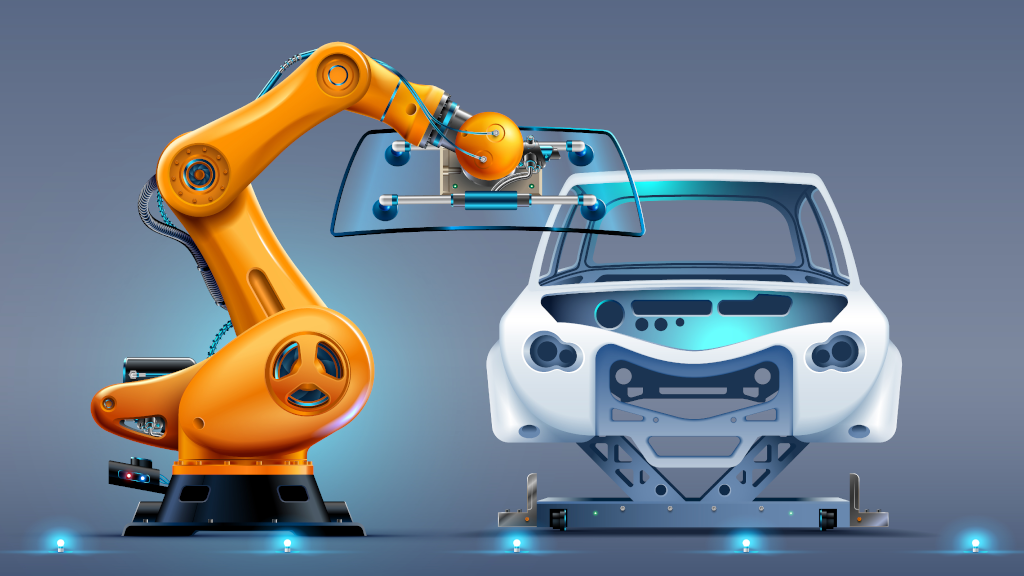It took some doing and a whole lot of adapting, but we’ve finally managed to make it to the other end of 2020. Though many manufacturers can’t say they aren’t worse for wear for the experience, they were able to draw quite a few insights as a result of having their status quo challenged and uprooted again and again. And while we’re all hoping 2021 will be different, it’s unrealistic to expect everything to immediately return to the old ways. There are many trends we saw invigorated as a result of 2020’s challenges and it’s very likely we’ll see many of these manufacturing trends bleed into 2021.
Of course, manufacturing is always rife with the next big “trend”. On an average day it’s normal to hear about a dozen different “innovations” that are simply smart manufacturing repackaged with a different name. And while we love discussing AI, machine learning, and industrial computers as much as the next blog, those trends aren’t things we’ve come to appreciate as a result of 2020. They’re constants — things to strive to incorporate at all times.
Below are 6 emerging trends in the manufacturing sector and changes in philosophy we’ve observed arise in response to the upheaval of norms witnessed during 2020 and, we feel, will be industry defining in 2021 and the years ahead.
1.) Increased Investment in Resiliency
Article Guide
2020 has proven once and for all that disaster recovery is overrated. While it is surely necessary, by the time a disaster has occurred and impacted your facility, it’s often too late to recover in a timely manner. Hundreds and hundreds of manufacturers felt this first hand when their supply chains were rocked as a result of COVID’s impact on China-centered networks. Disaster recovery plans didn’t plan for a complete uprooting of the status quo and thus, many businesses fell without having a proper backup means of production.
Fortunately, this has caused several manufacturers to prioritize understanding supply chain resilience and the value it delivers by giving factory floors several contingency plans for a compromised supply chain.
Some popular examples of resiliency applications include edge computing and digital twin simulations. The former gives businesses a local backup of critical data in case cyber-attacks or a global pandemic (both which have increased in frequency in 2020) compromise off-site data silos while the latter lets these businesses run simulations of different disruptions so response plans can be developed before disaster hits.
2.) Further Familiarization With Remote Tools
Remote work is no longer for perky startup companies. Many manufacturers have started to see the merit in allowing remote work for members of their teams that can afford to do so. As such, it’s very likely we’re going to see increased investment in remote work tools the likes of which we’ve seen characterize mid to late 2020. Software such as Zoom and Microsoft Teams which have exploded in use will likely show other software developers that there is a need for tools like these tailored to the manufacturing sector.
Remote manufacturing trends will naturally come with some investment in bolstered remote cybersecurity to meet the security needs of a team that operates on separate networks. It’s very likely we’ll start to see security efforts incorporated into the workstations deployed across the factory floor and at home workers’ offices.
Rugged computers that are built to last on the factory floor that can also support multi-factor identity authentication with hardware such as RFID, CAC card, and biometric readers have been proven to improve cyberdefense efforts and it’s likely they will become more common across several manufacturing verticals.
3.) Bringing on New Cybersecurity Talent
On the topic of cybersecurity, manufacturers are beginning to also understand that they don’t have the expertise to meet new cyberdefense needs. This, in conjunction with the surprising lack of skilled labor in manufacturing is prompting many to kill two birds with one stone by bringing on experienced security analysts.
Analysts are capable of pouring through data and instances of unauthorized network access and immediately pinpointing holes in cyberdefense efforts. From there, these professionals can patch the holes themselves or bring up the security concerns so they’re top of mind.
Analysts have the knowledge needed to see attack patterns that may seem random and chaotic to the average observer and use those patterns to dictate the best course of action for a cyberdefense plan.
4.) New Communication Apparatuses
In a blending of 2 emerging trends in the manufacturing sector, manufacturing communication systems address both the remote work and cybersecurity needs of the industry.
As far as remote work is concerned, these communication systems give employees a more accessible, efficient means of collaborating and sharing updates with one another. Not only that, they promote collaboration between both the front line workers on the factory floor and those who typically work behind a computer in an office setting. This is only more essential now that those office workers are even further removed from the operation and working from home.
And in regards to cybersecurity, email communications which used to be the gold standard for many businesses are no longer trustworthy since phishing scams are hiking up in frequency, meaning new methods of communication are necessary. This makes shared employee dashboards and communication systems a more efficient means of collaboration that also does away with a now compromised alternative.
5.) Direct to Consumer Sales
Trust in the old ways has been invariably broken as a result of 2020’s effects on the supply chain. As a result of many of these international supply chains being proven ineffective in the case of a disaster such as the COVID outbreak, many manufacturers have opted to either shift all supply chain partnerships to the local level or sell directly to the consumer. Those who’ve opted to become entirely self-sufficient to the point of selling directly to the consumer are beginning to implement solutions that lend themselves to improved customer service and timely deliveries.
Inventory management solutions such as panel mount PCs equipped with RFID scanners are one such solution that allows manufacturers to closely monitor inventory and raw materials, ensuring they’re never caught off guard by insufficient stock that could result in a slow delivery or canceled order.
6.) Employee Safety
Arguably the most important insight and manufacturing trend to be drawn from 2020 is the importance behind protecting your employees. Sanitation and employee health have been brought to the forefront of everyone’s consciousness as a result of the highly infectious disease that defined our 2020.
Regular disinfection, remote work for employees who feel under the weather, and other practices are slowly becoming the norm even in industries such as manufacturing that previously wouldn’t have prioritized these solutions.
When searching for hardware such as industrial tablets and shared workstations that are passed off from person to person on the factory floor, manufacturers are becoming more conscious of things such as IP65 certification that allow for these devices to be sanitized regularly without worry over damaging their internal components.
Separate Manufacturing Trends From Unfounded Hype
When observing the industry for manufacturing trends, it’s important to understand the limitations of your particular business. While these 6 emerging trends in the manufacturing sector are likely going to be integral to manufacturers in the near and late future, don’t fall for unwarranted hype for innovations like sophisticated AI and augmented reality. These piece of smart hardware and software are incredibly useful, but these innovations can wait until the more essential programs — the ones designed to keep your business afloat and your employees safe — are incorporated. For more information on the hardware needed to stay ahead in 2021, contact an expert from Cyberent today.
Benefits Of Industrial Tablets In Manufacturing
November 9, 2016
Industrial tablets are becoming increasingly popular in the manufacturing sector. Taking a more pragmatic approach than consumer-focused enterprises, manufacturing environments choose to deploy military grade tablets…
0 Comments8 Minutes
Policies That Could Change the Manufacturing Industry Overnight
August 8, 2019
There’s no denying that automation is the future of manufacturing: it would be impossible, considering its pretty much the present of manufacturing as well. And while news that “all robots will replace our jobs” in the…
0 Comments7 Minutes
The Use of Industrial Computers in the Automotive Industry
August 20, 2019
The automotive industry invented automation: it’s no surprise that they’ve embraced industrial computers faster than any other field of manufacturing. Because automotive manufacturing requires flexible solutions that…
0 Comments7 Minutes
You Can't
Learn from a Pop-up
But we can deliver knowledge to your inbox!
We dive deep in the industry looking for new trends, technology, news, and updates. We're happy to share them with you.
Knowledge, News, and Industry Updates Right in Your Inbox





